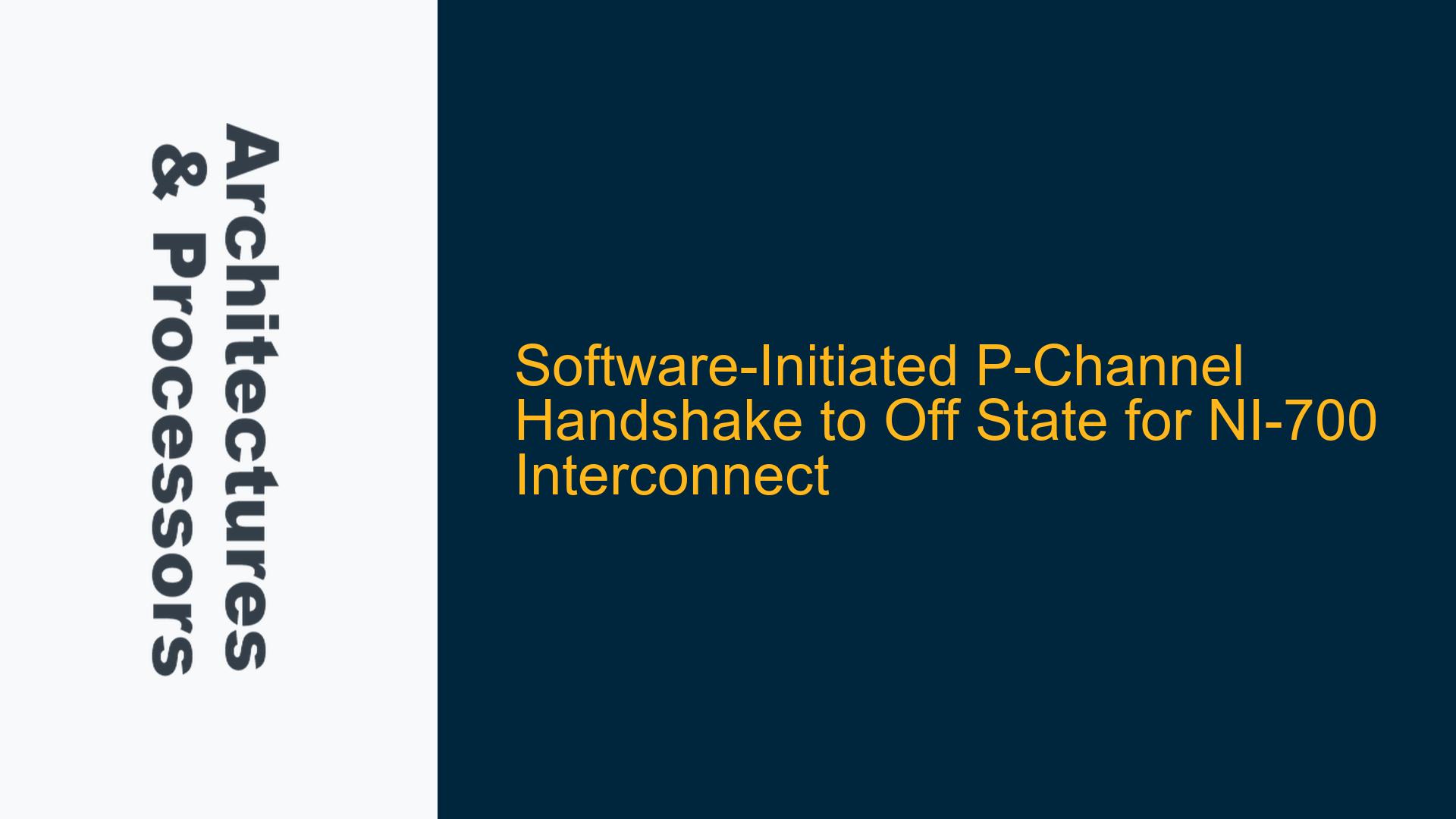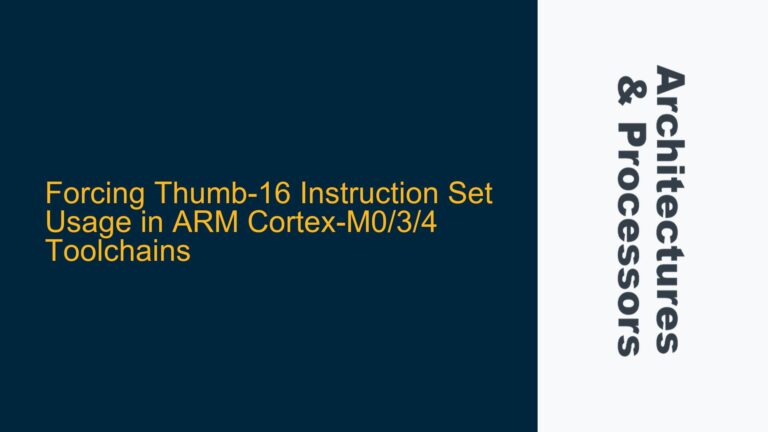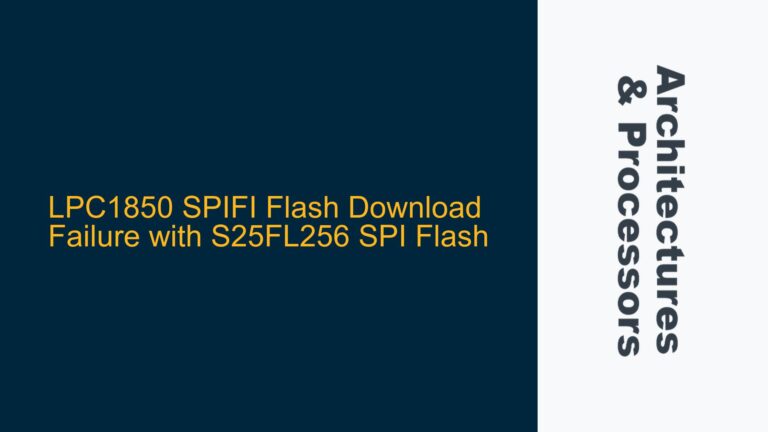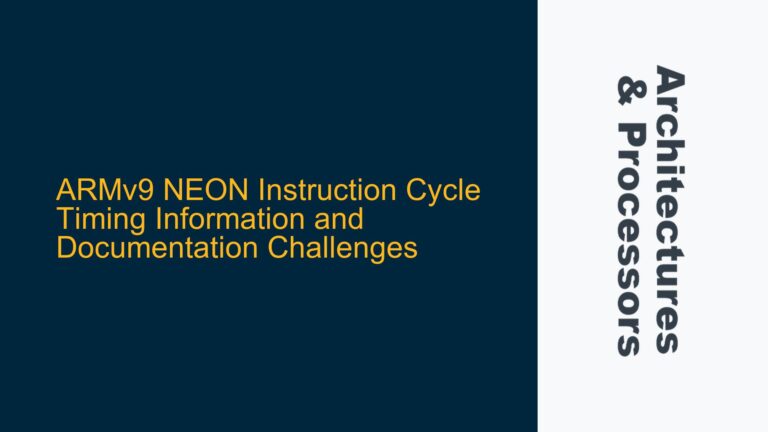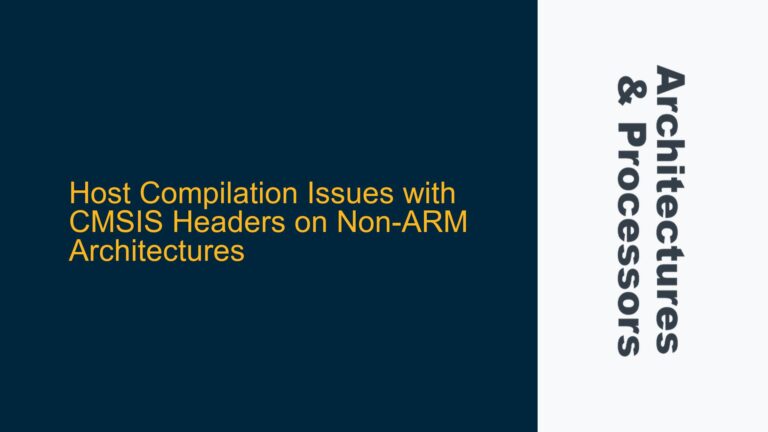ARM NI-700 Interconnect P-Channel Handshake Race Condition During Power Domain Transition
The ARM NI-700 interconnect is a highly configurable and scalable network interconnect designed for advanced SoCs. It supports multiple power domains, enabling efficient power management by allowing individual domains to transition between ON and OFF states. However, during power domain transitions, particularly when the downstream power domain is transitioning from ON to OFF, a race condition can occur due to improper handling of the P-Channel handshake. This handshake is critical for ensuring that all pending transactions are completed before the downstream domain powers off, preventing data corruption or loss.
In this scenario, the CPU on the completer side must ensure that the P-Channel handshake is completed before allowing the downstream power domain to transition to the OFF state. The P-Channel handshake is part of the ARM Network Interconnect (NI) protocol, which governs the communication between initiators and completers across different power domains. The handshake ensures that all outstanding transactions are acknowledged and completed before the power domain is shut down.
The race condition arises when the downstream power domain begins to transition to the OFF state before the P-Channel handshake is completed. This can happen due to misaligned clock domains, improper synchronization, or insufficient delays in the power control logic. The result is that pending transactions may be lost or corrupted, leading to system instability or data integrity issues.
To address this issue, a software-initiated mechanism is required to ensure that the P-Channel handshake is completed before the downstream power domain transitions to the OFF state. This mechanism must be implemented in firmware (FW) and should leverage the available hardware registers and control signals provided by the NI-700 interconnect.
Memory Barrier Omission and Cache Invalidation Timing
One of the primary causes of the race condition is the omission of memory barriers and improper timing of cache invalidation during the power domain transition. Memory barriers are essential for ensuring that all memory operations are completed in the correct order, particularly in multi-core or multi-domain systems where different components may have different views of memory.
In the context of the NI-700 interconnect, memory barriers ensure that all pending transactions are completed before the downstream power domain is shut down. Without proper memory barriers, the CPU may proceed with the power domain transition before all transactions are acknowledged, leading to the race condition.
Cache invalidation is another critical factor. When a power domain is transitioning to the OFF state, the caches associated with that domain must be invalidated to ensure that no stale data is retained. However, if cache invalidation is not timed correctly, it can interfere with the P-Channel handshake, causing transactions to be lost or corrupted.
The IDM Access Control register in the NI-700 interconnect plays a crucial role in managing these operations. This register provides control over the handshake mechanism and can be used to ensure that the P-Channel handshake is completed before the power domain transition. However, improper configuration or timing of this register can exacerbate the race condition.
In addition to memory barriers and cache invalidation, the clock domain crossing (CDC) between the upstream and downstream power domains must be carefully managed. The NI-700 interconnect operates across multiple clock domains, and improper CDC synchronization can lead to metastability issues, further complicating the handshake process.
Implementing Data Synchronization Barriers and Cache Management
To resolve the race condition and ensure a smooth power domain transition, the following steps should be taken:
-
Enable the IDM Access Control Register: The IDM Access Control register in the NI-700 interconnect must be configured to enable the P-Channel handshake mechanism. This register provides control over the handshake process and ensures that all pending transactions are completed before the downstream power domain is shut down. The register should be set to enforce a wait state until the handshake is completed.
-
Insert Memory Barriers: Memory barriers must be inserted at strategic points in the firmware to ensure that all memory operations are completed before the power domain transition. This includes both read and write barriers to ensure that all transactions are acknowledged and completed. The ARM DSB (Data Synchronization Barrier) instruction can be used to enforce this synchronization.
-
Invalidate Caches: Before initiating the power domain transition, the caches associated with the downstream domain must be invalidated. This ensures that no stale data is retained and that all transactions are properly flushed. The ARM DMB (Data Memory Barrier) instruction can be used to ensure that cache invalidation is completed before proceeding with the power domain transition.
-
Synchronize Clock Domains: The clock domain crossing between the upstream and downstream power domains must be carefully synchronized to prevent metastability issues. This can be achieved by inserting appropriate synchronization logic, such as dual-clock FIFOs or handshake signals, to ensure that the P-Channel handshake is completed across clock domains.
-
Monitor Handshake Completion: The firmware should monitor the completion of the P-Channel handshake before allowing the downstream power domain to transition to the OFF state. This can be done by polling the status bits in the IDM Access Control register or by using interrupt-based mechanisms to signal handshake completion.
-
Implement Timeout Mechanisms: To prevent the system from hanging in case of a handshake failure, a timeout mechanism should be implemented. If the handshake is not completed within a specified time, the firmware should take corrective action, such as aborting the power domain transition or resetting the affected components.
-
Verify with Simulation and Emulation: The implemented solution should be thoroughly verified using simulation and emulation environments. This includes testing for various corner cases, such as high transaction loads, clock domain crossing scenarios, and power domain transitions under stress conditions. The verification process should also include formal methods to ensure that the handshake mechanism is free from deadlocks and livelocks.
By following these steps, the race condition during the power domain transition can be effectively mitigated, ensuring that the P-Channel handshake is completed before the downstream power domain is shut down. This approach leverages the capabilities of the NI-700 interconnect and ensures robust and reliable operation of the SoC.
Detailed Implementation Guidance
To provide a more detailed implementation guide, let’s break down the steps into specific actions that need to be taken in the firmware and hardware:
Step 1: Configuring the IDM Access Control Register
The IDM Access Control register is a critical component in managing the P-Channel handshake. This register should be configured to enforce a wait state until the handshake is completed. The following steps outline how to configure this register:
-
Identify the Register Address: The address of the IDM Access Control register can be found in the NI-700 Technical Reference Manual (TRM). This address is typically located in the memory-mapped I/O space of the interconnect.
-
Set the Handshake Enable Bit: The IDM Access Control register contains a bit that enables the P-Channel handshake mechanism. This bit should be set to ‘1’ to enable the handshake.
-
Configure the Wait State: The register also contains fields that control the wait state duration. These fields should be configured based on the expected latency of the handshake process. The values should be chosen to ensure that the handshake is completed before the power domain transition.
-
Poll the Status Bit: After enabling the handshake, the firmware should poll the status bit in the IDM Access Control register to ensure that the handshake is completed. This bit will be set to ‘1’ once the handshake is successful.
Step 2: Inserting Memory Barriers
Memory barriers are essential for ensuring that all memory operations are completed before the power domain transition. The following steps outline how to insert memory barriers in the firmware:
-
Identify Critical Sections: Identify the sections of the firmware where memory operations are performed. These sections should be protected by memory barriers to ensure that all operations are completed before proceeding.
-
Insert DSB Instructions: The ARM DSB instruction should be inserted after critical memory operations to enforce a data synchronization barrier. This ensures that all memory operations are completed before the next instruction is executed.
-
Insert DMB Instructions: The ARM DMB instruction should be inserted before cache invalidation to ensure that all memory operations are completed before the cache is invalidated.
Step 3: Invalidating Caches
Cache invalidation is critical for ensuring that no stale data is retained during the power domain transition. The following steps outline how to invalidate caches in the firmware:
-
Identify Cache Lines: Identify the cache lines that need to be invalidated. These lines should include all data that is associated with the downstream power domain.
-
Perform Cache Invalidation: Use the ARM cache invalidation instructions to invalidate the identified cache lines. This ensures that all data is flushed from the cache and that no stale data is retained.
-
Verify Cache Invalidation: After performing cache invalidation, verify that the cache lines are indeed invalidated. This can be done by reading back the cache lines and ensuring that they contain the expected data.
Step 4: Synchronizing Clock Domains
Clock domain crossing (CDC) is a critical aspect of the P-Channel handshake. The following steps outline how to synchronize clock domains in the hardware:
-
Identify Clock Domains: Identify the clock domains that are involved in the P-Channel handshake. These domains should include the upstream and downstream power domains.
-
Insert Synchronization Logic: Insert synchronization logic, such as dual-clock FIFOs or handshake signals, to ensure that the P-Channel handshake is completed across clock domains.
-
Verify Synchronization: Verify that the synchronization logic is working correctly by simulating the clock domain crossing scenarios. This includes testing for metastability and ensuring that the handshake is completed without errors.
Step 5: Monitoring Handshake Completion
Monitoring the completion of the P-Channel handshake is essential for ensuring that the power domain transition is successful. The following steps outline how to monitor handshake completion in the firmware:
-
Poll the Status Bit: The firmware should poll the status bit in the IDM Access Control register to ensure that the handshake is completed. This bit will be set to ‘1’ once the handshake is successful.
-
Use Interrupt-Based Mechanisms: Alternatively, the firmware can use interrupt-based mechanisms to signal handshake completion. This involves configuring an interrupt to be triggered when the handshake is completed.
-
Verify Handshake Completion: After the handshake is completed, verify that the power domain transition is successful. This can be done by checking the power domain status registers.
Step 6: Implementing Timeout Mechanisms
Timeout mechanisms are essential for preventing the system from hanging in case of a handshake failure. The following steps outline how to implement timeout mechanisms in the firmware:
-
Set a Timeout Value: Set a timeout value based on the expected latency of the handshake process. This value should be chosen to ensure that the system does not hang if the handshake is not completed within a reasonable time.
-
Monitor the Timeout: The firmware should monitor the timeout value and take corrective action if the handshake is not completed within the specified time. This action may include aborting the power domain transition or resetting the affected components.
-
Handle Timeout Conditions: If a timeout occurs, the firmware should handle the condition by logging the error and taking appropriate corrective action. This may include retrying the handshake or resetting the system.
Step 7: Verification with Simulation and Emulation
Verification is critical for ensuring that the implemented solution is robust and reliable. The following steps outline how to verify the solution using simulation and emulation:
-
Create Testbenches: Create testbenches that simulate various scenarios, including high transaction loads, clock domain crossing, and power domain transitions under stress conditions.
-
Run Simulations: Run simulations using the created testbenches to verify that the handshake mechanism is working correctly. This includes testing for corner cases and ensuring that the handshake is completed without errors.
-
Use Formal Methods: Use formal methods to verify that the handshake mechanism is free from deadlocks and livelocks. This involves using mathematical models to prove that the handshake mechanism is correct.
-
Perform Emulation: Perform emulation on hardware platforms to verify that the handshake mechanism is working correctly in real-world conditions. This includes testing for performance and ensuring that the handshake is completed within the expected time.
By following these detailed steps, the race condition during the power domain transition can be effectively mitigated, ensuring that the P-Channel handshake is completed before the downstream power domain is shut down. This approach leverages the capabilities of the NI-700 interconnect and ensures robust and reliable operation of the SoC.
